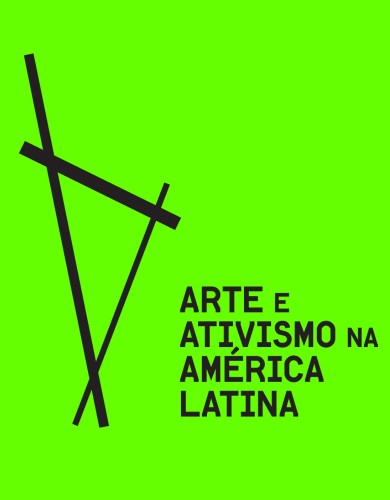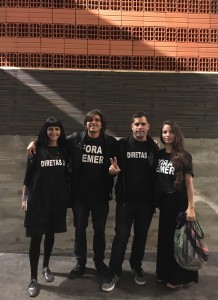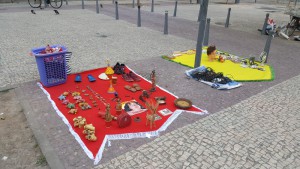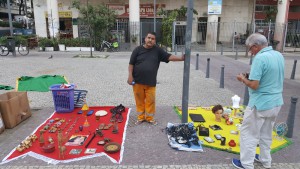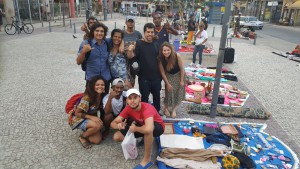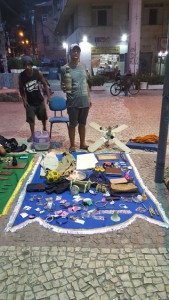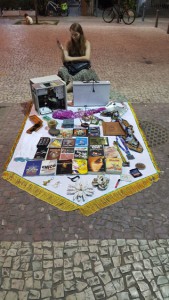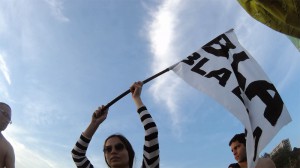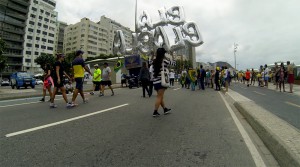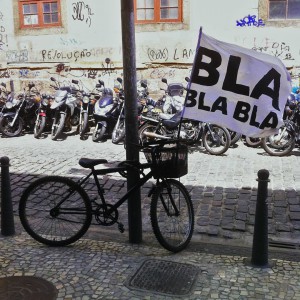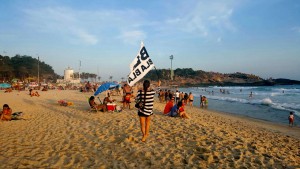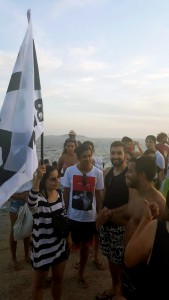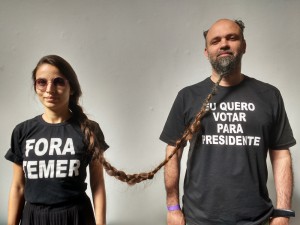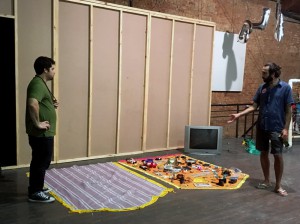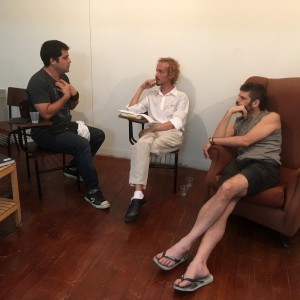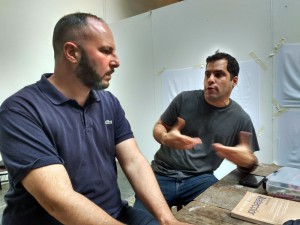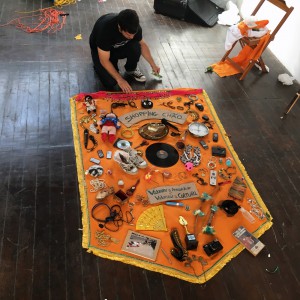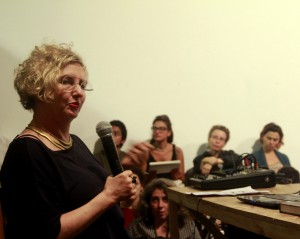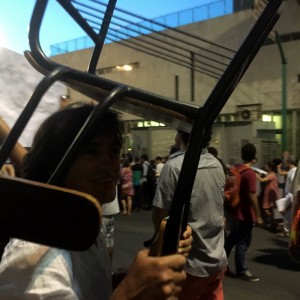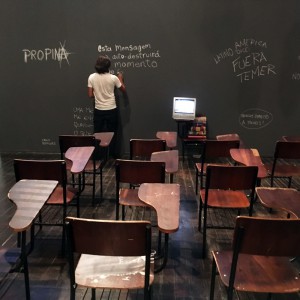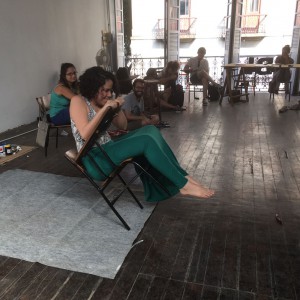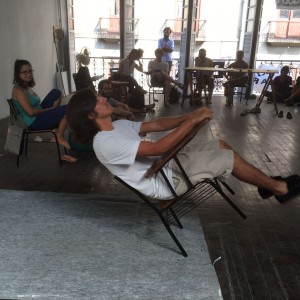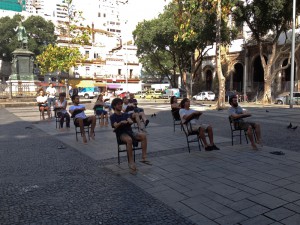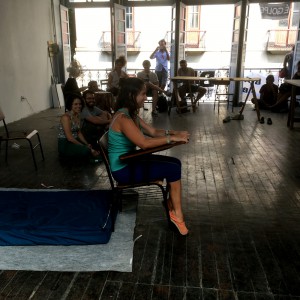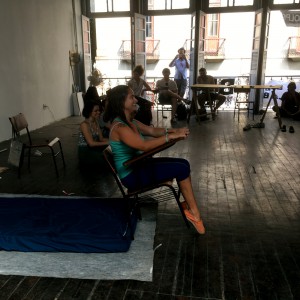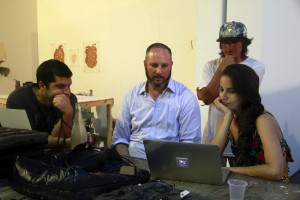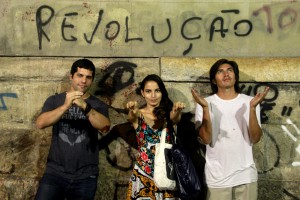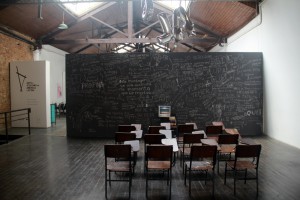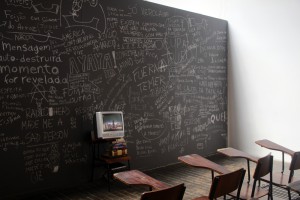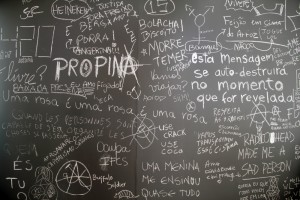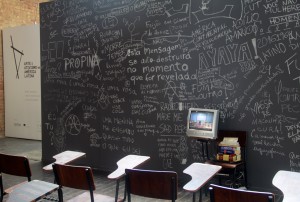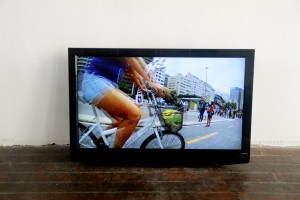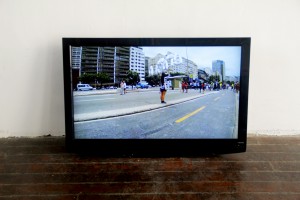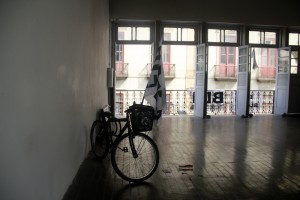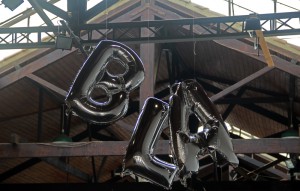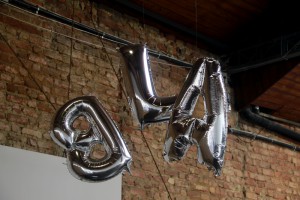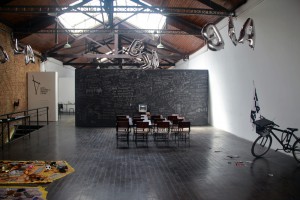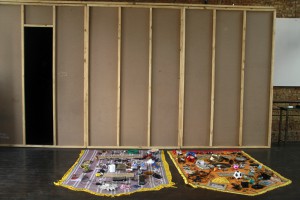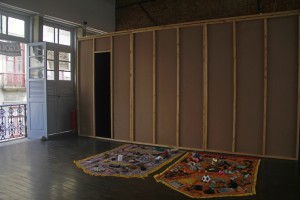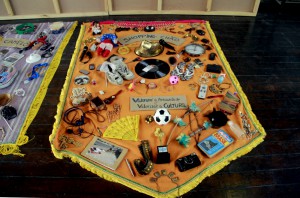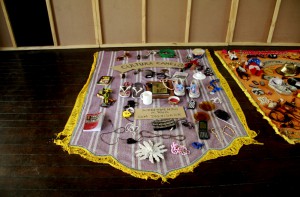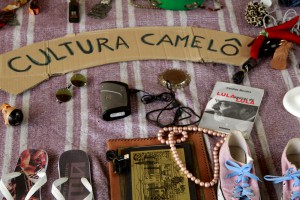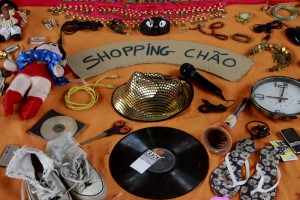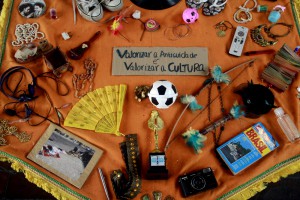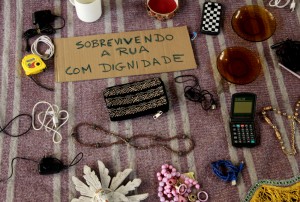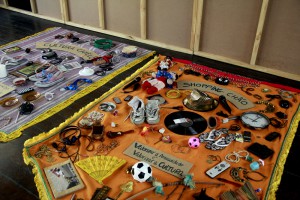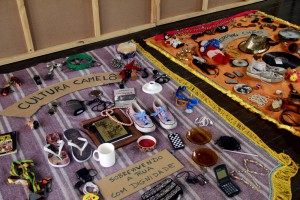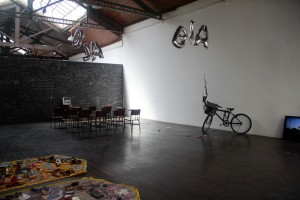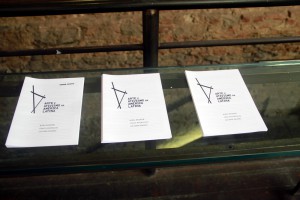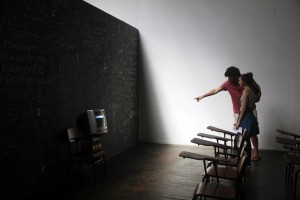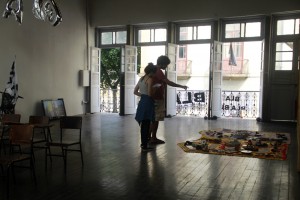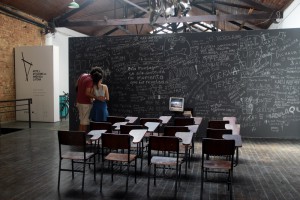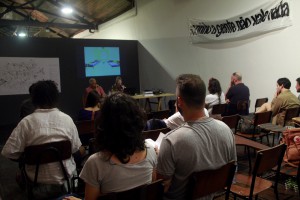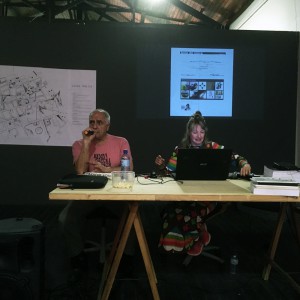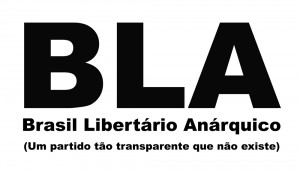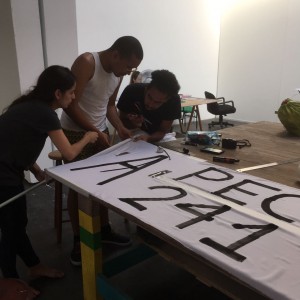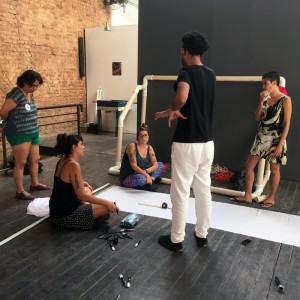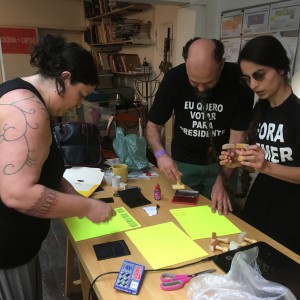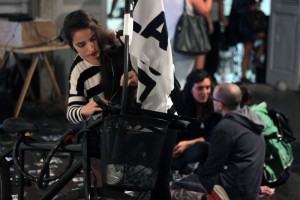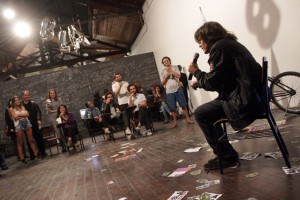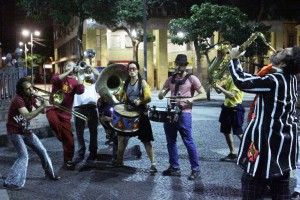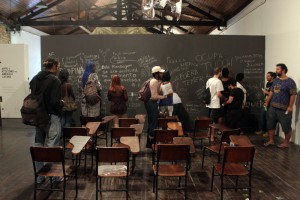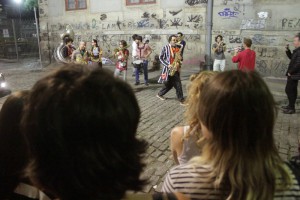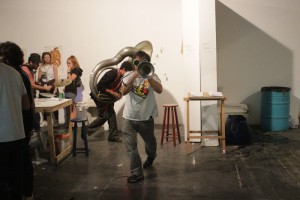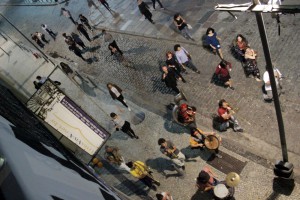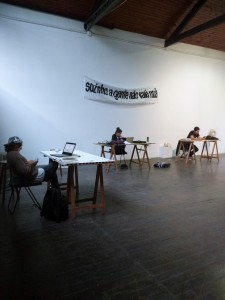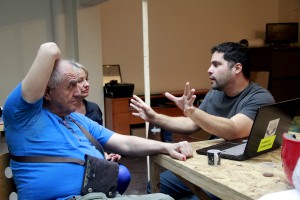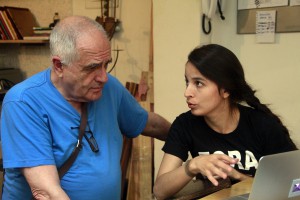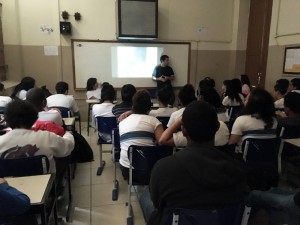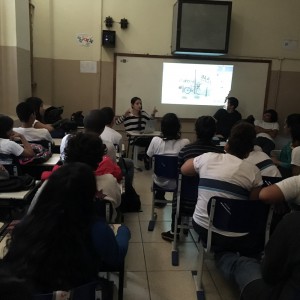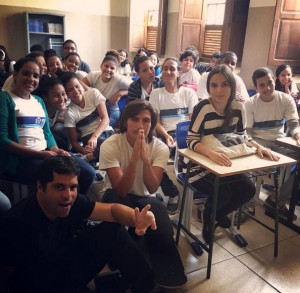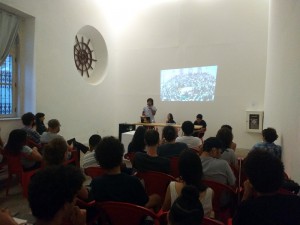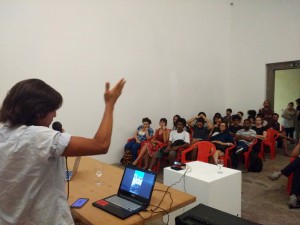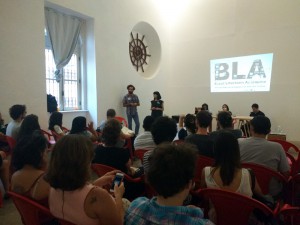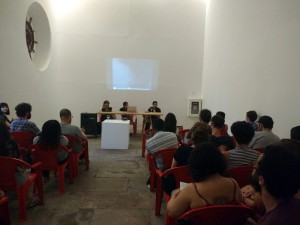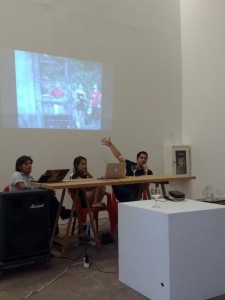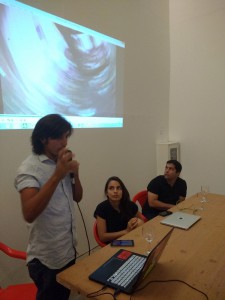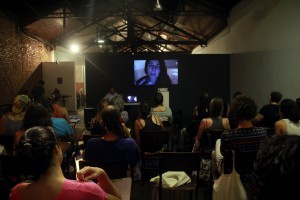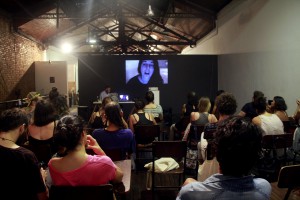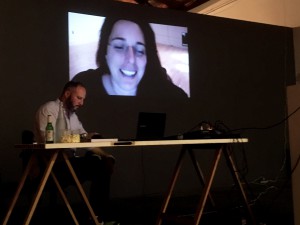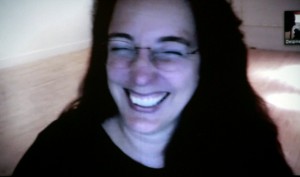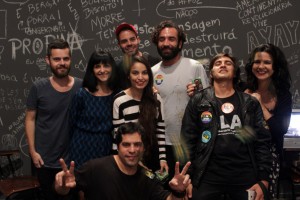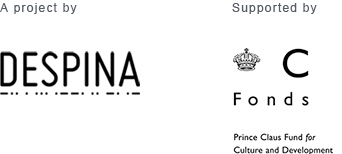ART AND ACTIVISM IN LATIN AMERICA is a project conceived by Despina, with the support from the Dutch organization Prince Claus Fund. The project extended for three years (2016, 2017 and 2018). Each year, a theme guided a series of actions and events, including occupations, workshops, talks, film screenings, exhibitions, public talks with important names from the contemporary artistic + activist thought and a residency programme. For this first edition, the theme was Public Space.
Theme’s presentation
by Bernardo José de Souza e Consuelo Bassanesi
The “Anti-Mubarak” protests at Tahrir Plaza, in Egypt, the “Indignados” at Puerta del Sol, in Madrid, the “Occupy Wall Street” at Liberty Plaza, in New York, the “Protest of the Plaza of Celestial Peace”, at Plaza Tiananmen, in Beijing, the “Mothers of the Plaza de Mayo”, in Buenos Aires, the “Ocuppy Cabral”, around the house of the governor of Rio de Janeiro, Sérgio Cabral – the importance of public spaces for political mobilizations is not a recent phenomenon and it takes different formats, however it is always in the streets that social movements shape up and gain weight.
Aditionally, many of the human rights, as freedom of expression, of reunion, information and movement, as well as the right to rest and leisure, depend on the availability of physical public space – its abscence, as well as its control, are detrimental and restrict civil freedom.
The notion of public space – whilst one of common use and possession of all – suffered diverse constructions and restrictions throughout the centuries. The privatization and normatization of such spaces, hinder the use of public spaces for public means, and weaken the access of spaces by different bodies and social demands. In theory, communal spaces and spaces which build up citizenship are inclusive and diverse; in practice, these spaces have their use increasingly controlled, in name of possession, order, law, codes of conduct.
Public manifestations in public spaces, not rarely in Brazil, in Latin America and internationally, terminate with police violence and criminalization of the protesters – see the case of the 23 Brazilian activists arrested on the previous day of the opening of the World Cup in Brazil and subsequently condemned for gang formation and planning of protests.
In this first edition, the theme of the project Art and Activism in Latin America revolved around diverse notions of public spaces, real or virtual: as a political arena where debates, protests and demands emerge and gain shape; as the environment where different cultures and social classes co-exist and colide; as a free zone for leisure and creative expression; as a place where personal and collective beliefs can be expressed and heard by the masses; as a space where knowledge and information can be exchanged; as a domain where civil and individual rights are submitted to disciplinary and control societies; as a territory for cultural resistance where communities should be granted access to means and infrastructure for self-development and organization.
We sought to promote an in-depth debate on the theme, and to develop a series of public actions that sought to defy the very comprehension and use of public space, inviting artists and activists whose practice are situated in the frontiers between art and politics. Equally, we are interested in practices that defy the role of cultural and political institutions, subverting the idea of the art-piece as a construction of material culture destinated to endure and to be exhibited in formal art spaces, destroying the frontier between the interior and the exterior and seeking in the streets the understanding of relevance and limitations of public spaces.
***
The selected artists for the residency programme were: Crack Rodriguez (El Salvador), Jesus Bubu Negrón (Puerto Rico) and Luciana Magno (Brazil). The idea was to work in a variety of informal modes of education, such as workshops, public lectures, visits to schools/universities and an exhibition. Participation costs were fully covered by the Prince Claus Fund as part of its Network Partnership Programme, from which Despina is part of. Special guests for this fisrt edition were: Tania Bruguera, Suely Rolnik, Roberto Jacoby and Pablo León de la Barra.
***
PROGRAMME
16 September (8 pm)
Talk with Brazilian psychoanalyst SUELY ROLNIK (Check video below)
29 September (8 pm)
Conversation with Argentinian artist ROBERTO JACOBY
17 to 21 October (2 – 6 pm)
Public workshops (free admisson)
21 October (6 pm)
Seminar ART AND ACTIVISM IN LATIN AMERICA at Casa França-Brasil
(in partnership with the Arts Institute of Rio de Janeiro State University – UERJ)
18 October (8 pm)
Talk with Cuban artist TANIA BRUGUERA and Mexican curator PABLO LEÓN DE LA BARRA
28 October (7 pm)
“In the Heat of the Battle” – exhibition opening with artists CRACK RODRIGUEZ, LUCIANA MAGNO and JESUS BUBU NEGRÓN. Click here for more information.
***
ABOUT THE ARTISTS IN RESIDENCY
Crack Rodriguez (1980) lives and works in San Salvador, El Salvador. His practice and his actions are intrinsically related to the social context and popular culture, from where he builds strong bonds with the public, who react and /or engage and often become part of his piece, not as a passive spectator but as a catalyst that activates the social context.
Rodriguez is a member of the Fire Theory, San Salvador El Salvador. He has participated in several exhibitions and projects by the Curating Agency, Agency for Spiritual Guest Work, curated by Anne Brand Galvez; “From the Tangible to the Intangible”, 4th Edition Nomadic Center of Contemporary Art “Tropical Interzone” & “The Virtual Residency program” Zurich; “Relocating SAL”, curated by Claire Breukel and Lucas Arevalo Ernst, Hilger Gallery, Vienna; “Peripheral Spectacular”, curated by Eder Castillo, Mexico City & Poporopo Project, Guatemala City & la-embajada.org.; “Documenting Memory”, Art Center / South Florida (USA); “ Performance Festival – acciones en el espacio publico, Tegucigalpa, Honduras; “Landings 5”, Art Museum of the Americas, in Washington DC; “Landings 6 and 7”, Haydee Santamaria Gallery, Casa de las Americas, Havana, Cuba; “Landings 8”, Taipei Fine Arts Museum, Taipei, Taiwan. Solo shows include: “Circunstancias de los restos”, Lokkus Arte Contemporáneo, Medellin, Colombia; “Neutropolitan Attack”, Eclectic Arts Festival, FEA, El Salvador.
More information
http://thefiretheory.org/crackrodriguez/
Jesus Bubu Negrón (1975) lives and works in San Juan, Porto Rico. His work is characterized by minimal interventions, the recontextualization of everyday objects and a relational approximation to artistic production as a revealing act of historical, social and economic proportions. Negrón lives in the neighborhood of Puerta de Tierra, in San Juan, where he is part of the Brigada PDT, a grassroots community organisation for the preservation and wellbeing of the neighborhood, its history and its people.
Upon completion of his first artist residency with M&M Proyectos in 2002 in Puerto Rico, Negron’s work has been displayed in renowned galleries and institutions around the world, both individually and collectively. Some of his most notable collaborations include: Abubuya Km0 project organised by Kiosko Galeria, Bolivia; The Obscenity of the Jungle with Proyectos Ultravioleta for SWAB Barcelona in Spain (2013); the 1st Bienal Tropical in Puerto Rico (2011), where he was awarded the “Golden Pineapple” prize for best artist; Interpretation of the Soneto de las estrellas with Sala de Arte Público Siqueiros in Mexico (2013), curated by Taiyana Pimentel; Trienal Poligráfica in Puerto Rico (2009), curated by Adriano Pedrosa, Julieta González and Jens Hoffmann; Sharjah Biennial in Sharjah, United Arab Emirates (2007), curated by Mohammed Kazem, Eva Scharrer and Jonathan Watkins; Whitney Biennial in New York (2006), curated by Chrissie Iles and Phillipe Vergne; the T1 Torino Trienale in Italy (2005), curated by Francesco Bonami and Carolyn Christov–Bakargiev, and Tropical Abstraction at the Steidelijk Bureau Museum in Amsterdam (2005), curated by Ross Gortzak.
His work has been reviewed in major publications such as Flash Art, New York Times, Journal des Arts, LA Times, The Art Newspaper, Art Nexus and Frieze, among others.
More information
http://www.jesusbubunegron.com/
Luciana Magno (1987) lives and works between Belem and Fortaleza, Brazil. She is graduated in Visual Arts and Technology of the Image from the University of Amazonia, Belém. She also holds a Master Degree from the Federal University of Pará, in the same city. Her works deal with performance, often directed to photography and video, object and website. Magno’s research focuses on the body and performative actions. She has been interested in political, social and anthropological issues, related to the impact of the development of the Amazon region, in the north of Brazil. The integration of the body to the landscape and the environment is a key and recurrent element in her works, which have been exhibited in various spaces, such as Centro Cultural Banco do Nordeste, Fortaleza (2014); Museu de Arte do Estado do Pará – Art in Pará – Belém (2014) and Museu de Arte do Rio de Janeiro – MAR (2013). She was the winner of the 10th edition of Rede Nacional Funarte Artes Visuais Programme with the project “Telefone Sem Fio”, which crossed the country from north to south through highways and waterways. This project led to a video and an audio file about Brazilian cultural diversity, its history and geography.
More information
http://www.lucianamagno.com
***
PICTURES GALLERY (horizontal scrolling)
Photos by Frederico Pellachin, Consuelo Bassanesi and Thiago Pozes
***
ART AND ACTIVISM IN LATIN AMERICA – YEAR I (2016)
Project conception & coordenation
Consuelo Bassanesi
Theme conception & development
Consuelo Bassanesi e Bernardo José de Souza
Curatorial Support
Bernardo José de Souza, Pablo Leon de la Barra
Production, Communication & Documentation
Frederico Pellachin
Press Relations
Rafael Millon
Financial & Legal Management
Clarice Goulart Correa
Production Assistant
Pablo Ferretti
Selection Committee (Residency Programme)
Consuelo Bassanesi, Bernardo José de Souza and Pablo León de la Barra
Logo and Graphic Design (publication)
Pablo Ugá
Photos (exhibition opening)
Thiago Pozes
Thanks to
Alexandre Rodolfo de Oliveira, Alexandre Sá, Bernardo Mosqueira, Bertan Selim, Helena Celestino, Leila Lak, Pablo León de la Barra, Prince Claus Fund.
